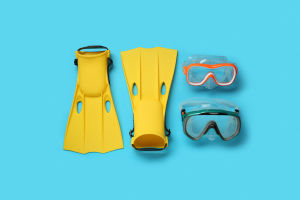Paragliding is a thrilling and serene aerial sport that caters to both beginners and seasoned adventurers. With the right equipment, training, and guidance, paragliding can offer a unique perspective of the world below.
Here's an in-depth guide to everything about paragliding, from understanding the basics to choosing the right gear.
Paragliding and Paramotoring
Paragliding Flights
A paragliding flight begins at a designated take-off point, where the paraglider wing, crafted from specialized fabric, is used to glide through the skies. Depending on weather and aerological conditions, flights can last from a few minutes to several hours. Thermals, or rising warm air currents, can help pilots ascend to heights far beyond the take-off point, sometimes reaching hundreds of meters.
Paragliding offers a variety of experiences, from extended cross-country flights covering vast distances to acrobatic maneuvers. It remains an underrated activity, but its potential for adventure is immense.
Tandem Flights
A tandem flight is ideal for newcomers. In this experience, an instructor accompanies you throughout the journey, managing the flight and ensuring safety. Paragliding schools handle all arrangements, including transportation to and from the take-off and landing sites.
Paramotor Flying
Paramotoring is a variation of paragliding where a motorized unit is strapped to the back. This motor helps pilots gain altitude, enabling take-offs from virtually any site. It offers additional flexibility and makes exploring new horizons even more accessible.
beauty of paragliding
Video by easygliderful
Learning to Paraglide
Introduction and Courses
Dear Lykkers! Paragliding schools provide two main options for newcomers:
Paragliding Baptism: This involves a tandem flight under the supervision of an instructor, allowing participants to experience the joy of flight without taking control.
Paragliding Courses: Designed for those eager to fly independently, these courses cover the fundamentals of flight and safety techniques.
Progression in Paragliding
Advancing in paragliding requires structured training. Initiation courses provide the foundation, enabling learners to make their first solo flights. Subsequent courses focus on mastering thermals, exploring new flying sites, and refining technical skills. With consistent practice and expert guidance, pilots can transition from beginners to seasoned paragliders.
Essential Paragliding Gear
Paragliding Clothing
Suitable clothing is crucial for comfort and safety. Most outdoor clothing used for hiking or camping is appropriate, but gloves require careful selection. Since paragliding involves exposure to varying air temperatures during a single flight, gloves must offer insulation without compromising mobility.
Paragliding Helmet
Safety helmets are mandatory in certified paragliding schools and are strongly recommended for all pilots. These helmets, compliant with the EN 966 standard, are designed to withstand impacts while ensuring comfort. Many models are versatile enough for other sports like skiing or mountaineering.
Paragliding Harness
The harness acts as the pilot's seat during the flight. Options include lightweight harnesses for easier mobility, reversible harnesses for multipurpose use, and cocoon harnesses that provide warmth and enhanced performance. Pilots can choose a harness based on their flying style and preferences.
Paragliding Bag
Paragliding bags are essential for transporting the wing, harness, and other accessories. Key factors to consider include volume, weight, and additional features like pockets and pole holders. The choice of bag should align with the equipment being carried, and multiple bags may be needed for different setups.
Paragliding Wing
The paraglider wing is the core component, enabling flight. These wings undergo rigorous testing before being marketed and are categorized by skill level: beginner, intermediate, and advanced. Wings are selected based on weight, flying discipline, and safety requirements.
Rescue Parachute
Although rarely used, rescue parachutes are a vital safety measure. They should be compatible with the harness and chosen based on weight and safety needs. Options include round parachutes for cost-effectiveness, square parachutes for higher safety performance, and steerable parachutes for added control during emergencies.
Flight Instruments and Radios
Flight instruments provide real-time data during flights, including altitude, GPS tracking, and position sharing. Radios are indispensable for maintaining communication with instructors or other pilots and for emergency contact if necessary.
Paragliding Accessories
Additional accessories like gas pedals, rescue pockets, and repair kits enhance the flying experience. These items improve safety and convenience, making them essential for regular paragliding enthusiasts.
Embracing the Sky
Paragliding is not just a sport but an adventure that combines skill, thrill, and tranquility. With the right preparation, training, and equipment, it offers an unparalleled opportunity to connect with nature and soar like a bird.


